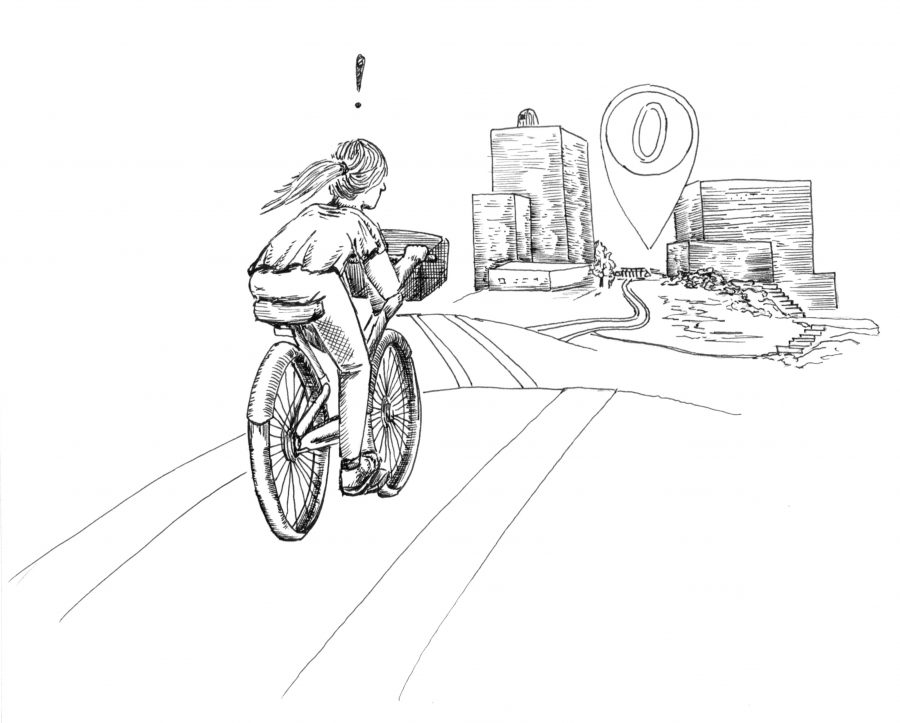Now that B-cycle is so popular that they’re running out of bikes, it’s time to have an earnest conversation about bicycle safety. Learning to ride a bicycle effectively in traffic is crucial to staying safe on busy Austin streets.
Bicycling down a busy street like 24th is intimidating. It’s common sense: A motor vehicle weighs thousands of pounds, while a bicycle and its rider weigh, at most, a few hundred.
Cyclists are all too aware of their vulnerability. According to a 2012 survey by the National Highway Traffic Safety Administration, 83 percent of cyclists who feared for their personal safety during their travels cited motor vehicle drivers as an immediate cause. And their fears are well-founded. The same survey showed that getting hit by a car is the most common cause for bicycle injury, making up nearly a third of the surveyed cases.
If you’re a cycling novice, you might be tempted to shun traffic by riding the wrong way down streets or riding on sidewalks. But according to Doug Smith, a Washington D.C.-area bike instructor who provided a comprehensive list of traffic safety tips to CityLab, that’s not as safe as you might assume. On a bike, you move much faster than a pedestrian, so motorists might not notice you crossing intersections or weaving between obstacles. That’s how accidents happen.
To summarize Smith’s other points, as a bicycle rider, you have the rights and duties of motorists because bicycles are traffic too. That means obeying the rules of the road. As a bicycle rider in Texas, you must stop at stop signs and red lights, ride in the same direction as traffic, use hand signals to indicate turns and stops and equip your bike with headlights and a rear light to stay visible at night.
You should also ride defensively by scanning for other traffic, as you would while driving a car. Watch for motor vehicles and pedestrians crossing your path at intersections, even on protected bike lanes like the ones on Rio Grande Street. And if a lane is too narrow to share safely with cars and trucks, you should “take it” by merging into the middle, which forces other vehicles to change lanes to pass you.
This style of riding might seem counterintuitive, but it’s the safest way to cycle in traffic. Wearing a helmet simply isn’t enough and may even be a little overrated. Henry Marsh, a leading British neurosurgeon, once opined that bicycle helmets “don’t help” in the event of an accident, and studies of mandatory helmet laws have showed that the policy only results in a modest (anywhere from 0 to 20 percent) reduction in injuries.
I’m not telling you to ditch your helmet, but consider avoiding accidents in the first place.
Young is a computer science senior from Bakersfield, California. He is a senior columnist. Follow him on Twitter @ryanayng.





















